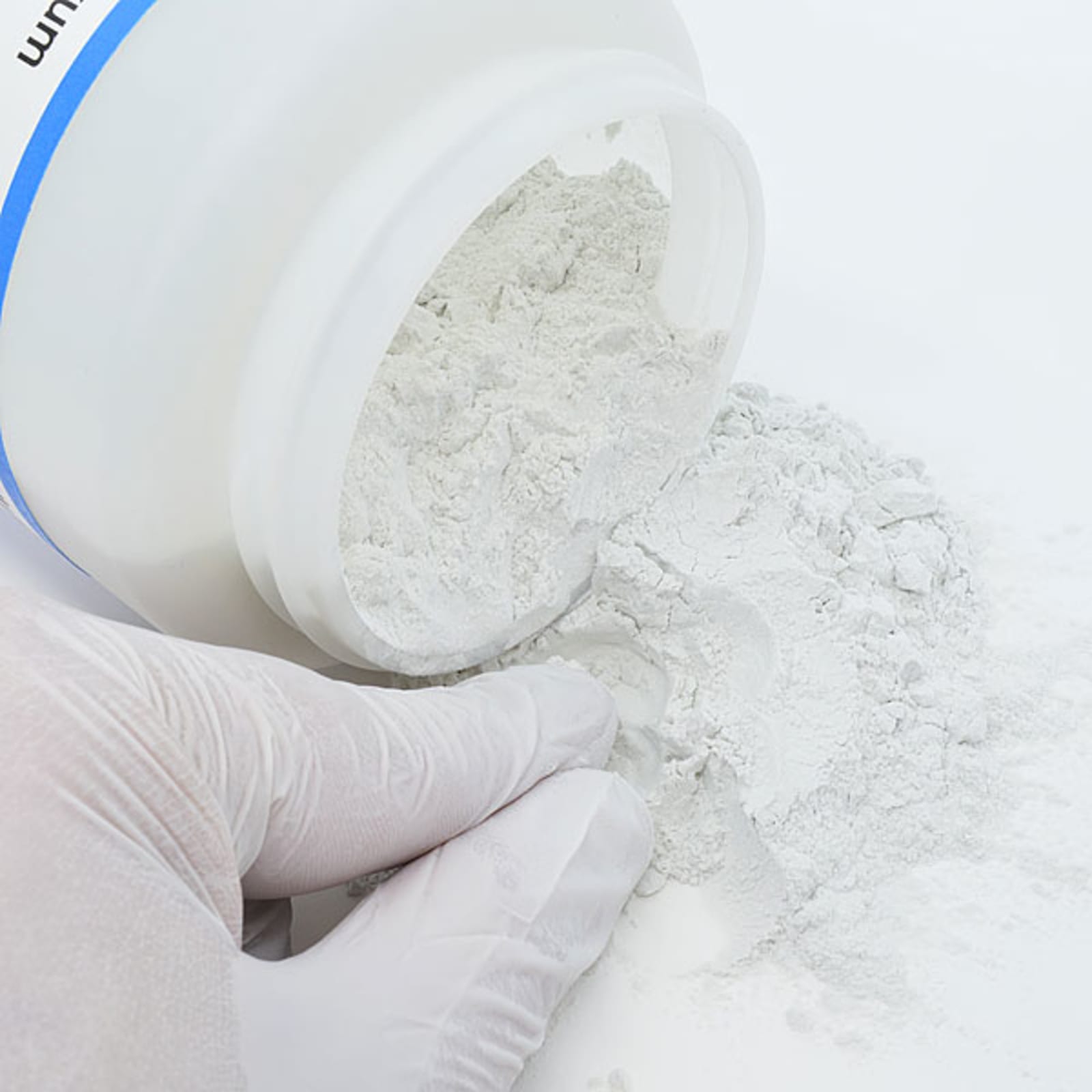Talcum (magnesium silicate)
Talcum is a magnesium silicate hydrate which is used as an important reinforcing, filling and lubricating agent.
Talcum is used to fill polyester, vinyl ester and epoxy resins, e.g. for the production of artificial stone and levelling compounds. Talcum reduces shrinkage during curing and leads to improved grindability of levelling compounds, but reduces their hydrolysis resistance. Talcum is free of asbestos and quartz.
- Produces very light, easily sandable fillers
- Reduction of shrinkage of resin systems
- Improvement of some mechanical properties
- Thickening of resins
- Mould powder for metal casting in silicone, see eWiki
Description
Light, grey-white, soft powder. Insoluble in water, organic solvents, diluted acids and alkalis.
Processing:
Talcum is mixed carefully and lump-free in the resin. The amount to be added depends on the desired setting of the end product. From a quantity of approx. 200 %, the resins can be filled.
Technical data:
Specific weight: 2.75 g/cm³
Particle size: < 50 µm
Density: 2.2 to 2.8 g/cm³
Hygroscopicity: practically 0
Water content: < 1 %.
Bulk density: approx. 700 g/l
Additive quantity: up to 300 % by weight
Fields of application:
The largest area of application is in the industry. Talcum is used as a filler and reinforcing agent in many applications, e.g. for printing paper, sealants and flooring compounds, polishes, insulating agents, underbody protection, many plastics such as polystyrene and polyamide, polyester putty, facade, glaze and matt paints, corrosion protection paints and primers. The pharmaceutical industry uses talcum as a lubricant for tablets and as a base for medical powders. Talc is a component of many cosmetic products. It is often found in baby powders. Talcum is one of the most important components of soapstone in the craft of sculptures. In food, talcum is a separating agent and carrier.




